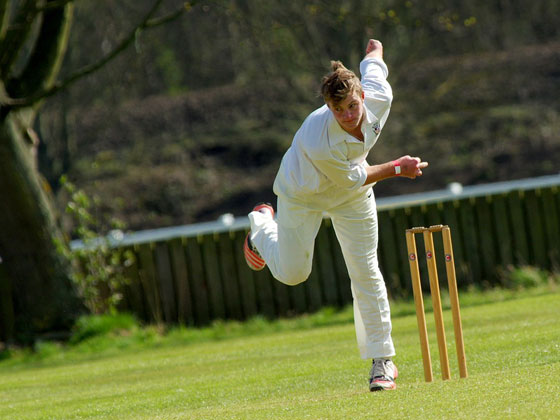Australian physicists revisit spin-bowling puzzle
22 Jul 2016 by alisonhadley Cricketer, Pixabay, CC0
Cricketer, Pixabay, CC0
Latest calculations reveal why small variations in the rotation of the ball applied by slow bowlers in cricket can cause batsmen big problems even before deliveries have pitched on the ground
Spin bowlers in cricket are masters at making the ball loop slowly through the air to confuse batsmen. Legends of the game know the magic combinations of top-spin, side-spin and off-spin necessary to fool the opposition, but some clever calculations by physicists in Australia could help to share this knowledge with a wider audience.
Ian and Garry Robinson – Honorary Fellows at Victoria University in Melbourne and the University of New South Wales, respectively – have been busy using mathematics to shine a light on the secrets of spin-bowling. In their latest work, published in the journal Physica Scripta, the brothers highlight the significance of small variations in the proportion of different spin types applied to the ball by slow bowlers in cricket.
To calculate the various flight paths, the scientists consider a number of forces acting on the ball. These include a gravity force, operating vertically downwards; a drag force, which opposes the motion and is in the opposite direction to the ball’s velocity vector; and finally, when the ball is spinning, a lift or Magnus force.
Top-spin causes the ball to dip in flight, side-spin causes the ball to move side-ways through the air and, perhaps most importantly in cricket, off-spin can cause the ball to drift across the pitch towards the end of the delivery, drawing the batsman into a more vulnerable position.
Once their numerical analysis had confirmed some of the more well-known details of the game, the researchers were ready to examine spin-bowling at a subtler level.
“We found that if the total spin is kept constant and a small amount of top-spin is added to the ball at the expense of some off-spin, the length at which the ball pitches can be reduced by as much as 25 cm – an amount that batsmen can ignore at their peril – despite little change being observed in the side-ways drift,” revealed Ian Robinson. “On the other hand, a small amount of side-spin introduced to a top-spin delivery does not alter the point of pitching significantly, but can produce 10 cm or more of side-ways drift.”
They considered other combinations too. “When a side-spin component is added to the spin of a ball bowled with a mixture of off-spin and top-spin in equal proportions, significant movement occurs in both the side-ways direction and in the point of pitching, of the order of a few tens of centimetres,” highlighted Garry Robinson.
The physicists hope that their analysis will give newcomers to spin-bowling a helping hand in mastering the variety of deliveries necessary to keep batsmen guessing. Tennis players might also benefit from the work (on this theme, also check out – “Radar speed gun true velocity measurements of sports-balls in flight: application to tennis” by Garry Robinson and Ian Robinson 2013 Phys. Scr. 88 018101).
Physica Scripta is an international, broad-scope journal for experimental and theoretical physics. It is published by IOP Publishing on behalf of the Royal Swedish Academy of Sciences for the Science Academies and the Physical Societies of the Nordic Countries.